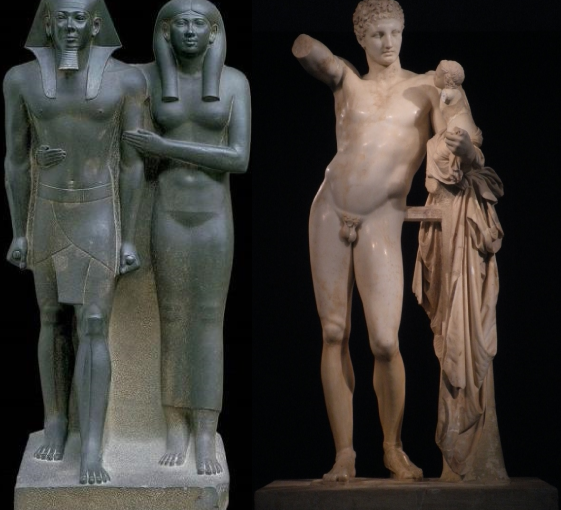Humanism is the aspect of giving value and importance to humanity over the divine beings (gods). Humanism gives humans value where no other system had before. Greek art illustrates humanism through its sculptures. Greek sculptures are very life-like as can be seen in the “Hermes and the Infant Dionysus” work. The body has shows that there was a lot of attention brought to the muscles and facial features by the artist. The stance that Hermes takes is very human, despite his status as a god. He stands in a pose so humanly that it almost looks as though he were right there in the room with you. In contrast, the “King Menkaure (Mycerinus) and queen” sculpture does not have a humanly stance. They are very rigid and do not look like they could be in the room with you. They look like statues, so they are evidently not life-like. Their facial expressions are not those of a person who you would ever interact with, as opposed to Hermes’ expression that looks like that of a real person. These aspects in the art show humanism by showing that the realism of the human body is of more importance than the actual aestheticism of the sculpture. In fact, even by making Hermes, a god, look like an ordinary human being is very different from most depictions of gods, because gods were not normally even remotely equated to humans.


